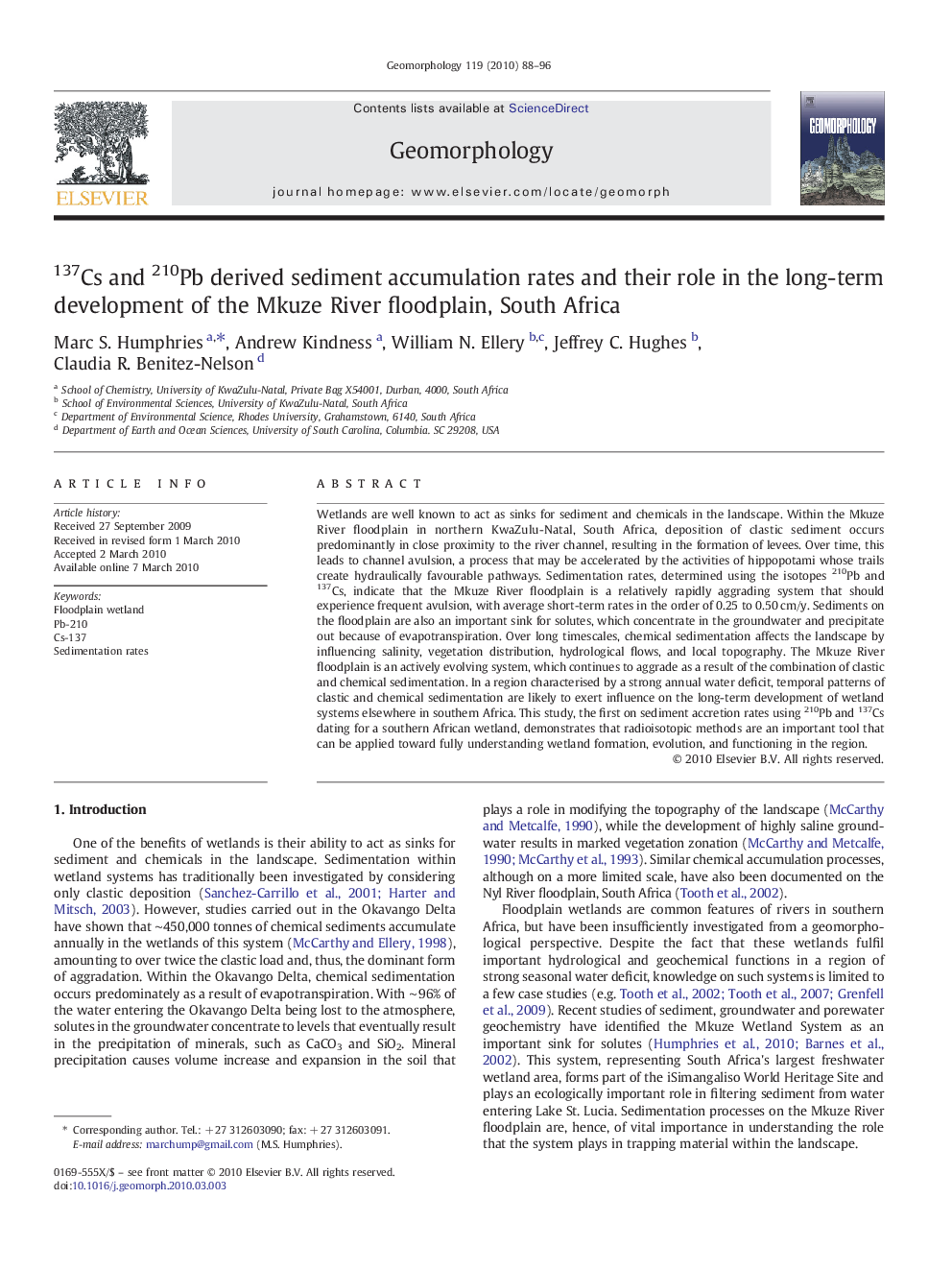| کد مقاله | کد نشریه | سال انتشار | مقاله انگلیسی | نسخه تمام متن |
|---|---|---|---|---|
| 4685926 | 1635521 | 2010 | 9 صفحه PDF | دانلود رایگان |

Wetlands are well known to act as sinks for sediment and chemicals in the landscape. Within the Mkuze River floodplain in northern KwaZulu-Natal, South Africa, deposition of clastic sediment occurs predominantly in close proximity to the river channel, resulting in the formation of levees. Over time, this leads to channel avulsion, a process that may be accelerated by the activities of hippopotami whose trails create hydraulically favourable pathways. Sedimentation rates, determined using the isotopes 210Pb and 137Cs, indicate that the Mkuze River floodplain is a relatively rapidly aggrading system that should experience frequent avulsion, with average short-term rates in the order of 0.25 to 0.50 cm/y. Sediments on the floodplain are also an important sink for solutes, which concentrate in the groundwater and precipitate out because of evapotranspiration. Over long timescales, chemical sedimentation affects the landscape by influencing salinity, vegetation distribution, hydrological flows, and local topography. The Mkuze River floodplain is an actively evolving system, which continues to aggrade as a result of the combination of clastic and chemical sedimentation. In a region characterised by a strong annual water deficit, temporal patterns of clastic and chemical sedimentation are likely to exert influence on the long-term development of wetland systems elsewhere in southern Africa. This study, the first on sediment accretion rates using 210Pb and 137Cs dating for a southern African wetland, demonstrates that radioisotopic methods are an important tool that can be applied toward fully understanding wetland formation, evolution, and functioning in the region.
Journal: Geomorphology - Volume 119, Issues 1–2, 15 June 2010, Pages 88–96